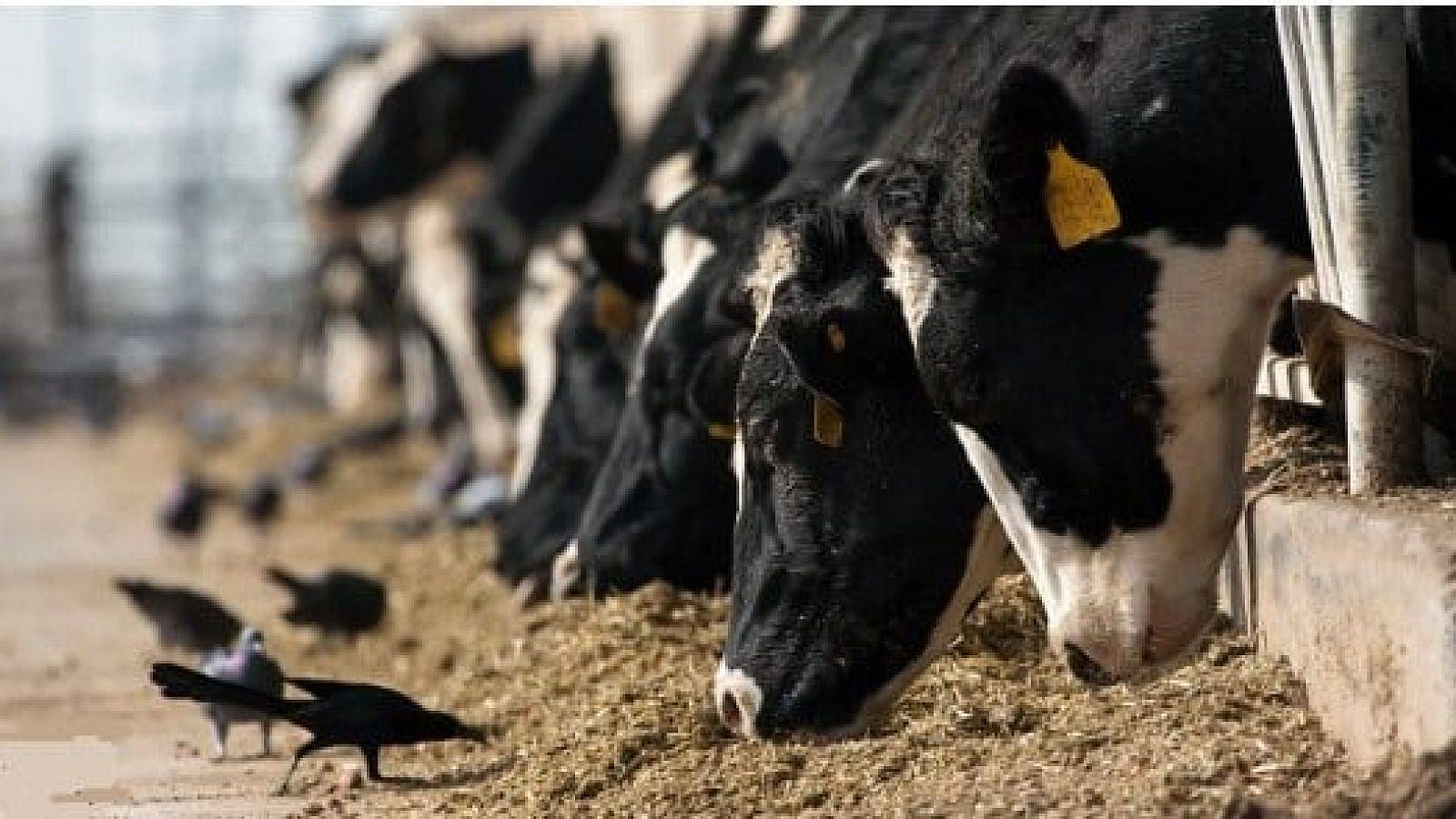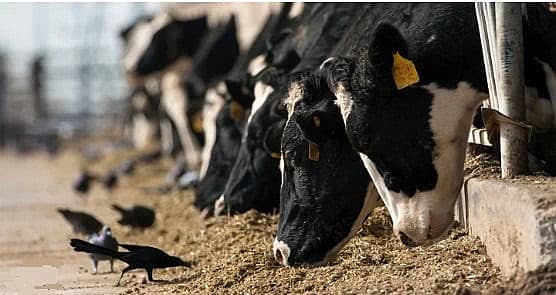USDA – Anticipation of a worse than expected placement number sent both live cattle and feeder futures sharply lower at week’s end (Nov.22). The actual numbers were well short of pre-release guesses that reached as high as 119% of last year.
The report showed placements at 110% of prior year — not an alarming number considering last year’s low placements due to weather. Placement weights tended to the high side with light weight [under 600#] under last year and heavier weight categories above prior year.
The report will be read as bullish to futures and certainly raise the possibility of a corrective move from feeder futures that dropped over 300 points Friday (Nov.22). However, placements in November are likely to continue to trend higher than prior year.
The markets for both feeder cattle and live cattle will remain unsettled until resolution is brought to the Chinese/USA trade wars. With every tick on the CME board vulnerable to the latest trade news, the marketplace is in need of price stability with a marketplace driven by market fundamentals and not trade news.
Cash Cattle: Cattle owners will look for increased competition this week from the Tyson Kansas plant. While the packers will be slaughtering for a holiday shortened week this week, packer margins will stimulate interest in acquiring sufficient inventory for a full week next week. Cattle will be priced on a par with December futures.
The “make hay while the sun shines” mentality was apparent in the beef plants last week. At 662,000 head, the slaughter rose to recent highs propelled by extra-ordinary margins and the possibility they may be narrowed with the reopened Tyson plant. The cutout is currently $20 cwt. above last year and live prices par with last year. All eyes will be on the weekly slaughter volumes once the down plant is up and running. The question before all traders is the impact of a larger slaughter volume on the cutout. The boxes were weaker this past week as the slaughter volume jumped and this may continue another week before late year demand kicks in. A newly inked trade agreement with Japan allowing reduced tariffs on exported beef to one of our largest trading partners will help with export business.
In the south sales developed at $116 live and in the north $115-117 live also one higher and mostly $184 dressed or $2 higher. Ne week, there will be increased competition as Tyson resumes limited slaughter operations in Kansas.
Cattle Futures: Futures were lower with most months suffering triple digit losses in front of a COF report. Next week, re-aligning cattle flows and a more normalized slaughter, will be welcomed into the marketplace. Traders will return after absorbing a COF report that failed to reach bearish expectations.
*The Comprehensive Fed Cattle Weekly Report offers the most current information on the current status of fed cattle being harvested. The report is published each Tuesday and includes the previous week’s change in carcass weights and quality grading.
The latest report shows carcass weights up 5# at 887# which remains 12# over last year. This is the second 5# increase in a row when seasonally weights should be dropping. Quality grade grading increased .2% from prior week. The improvement in grading is now running over last year.
Forward Cattle Contracts: The volume of forward sales were moderate in all months. Plains sales in February/March/April were mostly at par the matching board price. Much larger premiums were posted in the northwest region [+$6-8].
*Weekly graphs on the Comprehensive Weekly Fed Cattle Report break down the categories of trade for the week according to 1) formula cattle; 2) negotiated live; 3) negotiated dressed; 4) and forward contracts. Some cattle included in the formula category are week to week negotiated grids and not committed cattle to one plant. Other cattle designated as formula are “over the tops”.
The Cutout: Box beef prices were weak to close the week with the choice cutout losing over $3. The choice/select spread moved back to $21. Buyers next week will be purchasing for the period in-between Thanksgiving and Christmas — a time when beef sales improve.
Beef Feature Activity Index: This is the beginning of preparations for the holiday season and the middle meats are attracting the attention of retail and food service operators. Ribs are working higher, but a rally in 90% lean is bringing along the end meats.
The report will be read as bullish to futures and certainly raise the possibility of a corrective move from feeder futures that dropped over 300 points Friday. However, placements in November are likely to continue to trend higher than prior year
Nebraska Cattle on Feed down five percent
Nebraska feedlots, with capacities of 1,000 or more head, contained 2.45 million cattle on feed on November 1, according to the USDA’s National Agricultural Statistics Service. This inventory was down 5 percent from last year.
Placements during October totaled 670,000 head, up 3 percent from 2018. Fed cattle marketings for the month of October totaled 480,000 head, unchanged from last year. Other disappearance during October totaled 10,000 head, unchanged from last year.
Colorado Cattle on Feed up eight percent
The number of cattle and calves on feed for the slaughter market in Colorado feedlots with a capacity of 1,000 head or larger was estimated at 1,070,000 head as of November 1, 2019, according to the Mountain Regional Field Office of the National Agricultural Statistics Service, USDA.
The latest inventory was eight percent above last month and 5 percent above the November 1, 2018 inventory.
Cattle feeders with 1,000 head or larger capacity marketed an estimated 155,000 head of fed cattle during October 2019. This was down 11 percent from last month’s marketings, but 3 percent above the November 2018 marketings.
An estimated 240,000 cattle and calves were placed on feed during October 2019, no change from the previous month’s placements, but 23 percent above the October 2018 placements.
Of the number placed in October, 21 percent weighed less than 600 pounds, 19 percent weighed from 600 to 699 pounds, 17 percent weighed from 700 to 799 pounds, 23 percent weighed 800 to 899 pounds, and 21 percent weighed 900 pounds and greater.
Other disappearance for October, at 5,000 head, was the same as last month and last year.
Iowa Cattle on Feed down six percent
Cattle and calves on feed for the slaughter market in Iowa feedlots with a capacity of 1,000 or more head totaled 660,000 head on November 1, 2019, according to the latest USDA, National Agricultural Statistics Service – Cattle on Feed report. This was up 3 percent from October 1, 2019, but down 6 percent from November 1, 2018. Iowa feedlots with a capacity of less than 1,000 head had 530,000 head on feed, up 10 percent from last month but down 2 percent from last year. Cattle and calves on feed for the slaughter market in all Iowa feedlots totaled 1,190,000 head, up 6 percent from last month but down 4 percent from last year.
Placements of cattle and calves in Iowa feedlots with a capacity of 1,000 or more head during October totaled 114,000 head, up 39 percent from September and up 7 percent from last year. Feedlots, with a capacity of less than 1,000 head, placed 122,000 head, up 44 percent from September and up 63 percent from last year. Placements for all feedlots in Iowa totaled 236,000 head, up 41 percent from September and up 30 percent from last year.
Marketings of fed cattle from Iowa feedlots with a capacity of 1,000 or more head during October totaled 92,000 head, up 31 percent from September but down 1 percent from last year. Feedlots, with a capacity of less than 1,000 head, marketed 67,000 head, down 16 percent from September but up 26 percent from last year. Marketings for all feedlots in Iowa were 159,000 head, up 6 percent from September and up 9 percent from last year.
Other disappearance from all feedlots in Iowa totaled 7,000 head.
*Note: This report is a combination of estimates from the USDA Cattle on Feed survey for Iowa feedlots with a capacity of 1,000 or more head and the Iowa Department of Agriculture and Land Stewardship-funded Cattle on Feed survey for Iowa feedlots with a capacity of less than 1,000 head.
Minnesota Cattle on Feed down 13 percent
Cattle and calves on feed for the slaughter market in Minnesota for feedlots with a capacity of 1,000 or more head totaled 130,000 head on November 1, 2019, according to the latest USDA, National Agricultural Statistics Service – Cattle on Feed report. This is up 25,000 head from last month but down 20,000 head from last year.
Placements during October totaled 39,000 head, up 17,000 head from September but unchanged from last year. Marketings for October were 13,000 head, down 3,000 head from September and down 5,000 head from last year. Other disappearance totaled 1,000 head.
Kansas Cattle on Feed up three percent
Kansas feedlots, with capacities of 1,000 or more head, contained 2.43 million cattle on feed on November 1, according to the USDA’s National Agricultural Statistics Service. This inventory was up three percent from last year.
Placements during October totaled 460,000 head, up 14 percent from 2018.
Fed cattle marketings for the month of October totaled 400,000 head, up one percent from last year.
Other disappearance during October totaled 10,000 head, down 10,000 head from last year
U.S. Cattle on Feed up one percent
USDA – Cattle and calves on feed for the slaughter market in the United States for feedlots with capacity of 1,000 or more head totaled 11.8 million head on November 1, 2019. The inventory was 1 percent above November 1, 2018.
Placements in feedlots during October totaled 2.48 million head, 10 percent above 2018. Net placements were 2.42 million head. During October, placements of cattle and calves weighing less than 600 pounds were 600,000 head, 600-699 pounds were 540,000 head, 700-799 pounds were 517,000 head, 800-899 pounds were 475,000 head, 900-999 pounds were 230,000 head, and 1,000 pounds and greater were 115,000 head.
Marketings of fed cattle during October totaled 1.88 million head, 1 percent below 2018. Other disappearance totaled 59,000 head during October, 14 percent below 2018.











